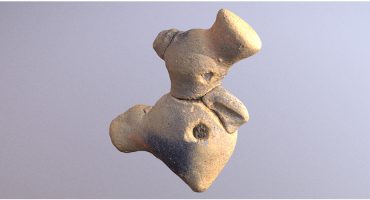Maritime Southern Asia
Maritime Southern Asia stretches from the coasts of Arabia across the Indian Ocean and through the archipelagos of Southeast Asia to the Pacific ports of Vietnam and southern China. For centuries it has been an interconnected region with circulations of people, materials and ideas across this vast seascape shaping the historical development of a rich mosaic of diverse local cultures.
This vast watery world also contains innumerable islands including the Maldives, which has historically been an important site on the maritime crossroads of the Indian Ocean world. Over the centuries, the Maldive Islands have been home to Buddhist monastic communities, a Muslim sultanate, and a brief Portuguese occupation, as well as Dutch and British protectorates before the establishment of the modern state in 1968.
Today, its low-lying islands are at the front lines of the devastating effects of climate change—they are critically threatened by rising sea levels as well as the bleaching and erosion of protective coral reefs resulting from warming ocean temperatures.
The much larger islands of Indonesia face somewhat different, but no less dire, natural and human threats to heritage sites. The Indonesian archipelago, which has historically been one of the world’s most dynamic sites of cultural interaction, is situated along cross-currents of maritime trade between East Asia and the Indian Ocean World. While today the modern nation of Indonesia is home to the world’s largest Muslim population, its internally diverse culture was produced out of histories of interaction with Buddhism, Hinduism, Chinese civilization, Christianity, and indigenous traditions.
The cultural heritage of the Maldives and Indonesia reflects these cultural dynamics and provides rich resources for exploring the complex experiences of communities across the region, and the importance of these islands for contemporary understandings of global history.
Today, however, many important sites, monuments, and objects associated with this rich history are increasingly exposed to environmental stress from cyclones, tsunami, coastal erosion, land subsidence, and rising sea-levels, as well as rapid and unplanned development and construction, and, in some cases, deliberate acts of vandalism.
The Maritime Asia Heritage Survey
The Maritime Asia Heritage Survey (MAHS) works to digitally document historical and archaeological sites across the broader region of maritime Southern Asia. Our project builds upon a pilot phase of operations in the Maldives (2018-2020) while also expanding along historical routes of maritime connection linking those islands to the broader Indian Ocean World with our current field survey operations in Indonesia.
Over the coming years, the MAHS will also be operating in a number of other countries across the region, including Vietnam and Sri Lanka.
The MAHS is funded by a grant from Arcadia, a charitable fund of Lisbet Rausing & Peter Baldwin. Over the coming years, we will also be operating in a number of other countries across the region, including Vietnam and Sri Lanka.
3D modeling of endangered heritage
The MAHS field teams use digital technologies including GPS/RTK (Real-Time Kinematic) mapping, digital photography, video, CAD drawings and IIIF(International Image Interoperability Framework) standard manuscript digitizations, photogrammetry, and LiDAR to produce robust records for the benefit of historians, local communities, and heritage management professionals.
We use both traditional and cutting-edge methods to build and shape our 3D documentation of heritage sites across the region, including a wide range of remote-sensing techniques. Depending on the nature and condition of a specific site, we employ various combinations of drone and DSLR photogrammetry, aerial and terrestrial laser-scanning, GIS, satellite imagery, and any other techniques helping us to document and study a cultural heritage site. For terrestrial photogrammetry, dedicated cameras with fixed focus lenses are utilized, while aerial coverage is provided by mid-range (DJI Phantom 4 Pro) and professional (DJI Matrice 300) drones, the latter equipped with a 45MP Zenmuse P1 payload. For laser scanning, we use tripod-mounted FARO Focus LiDAR units as well as a Zenmuse L1 sensor payload mounted on our DJI Matrice 300 drone.
The spatial data collected with these tools by our teams in the field is then processed at our Digital Heritage Documentation Lab in Kyoto using Methashape Professional, Reality Capture, ReCap, Cloud Compare, MeshLab, MeshMixer, AutoCAD, and other software applications. In addition to providing for the construction of 3D models, this data is also used to create orthophotomaps and by architects on our team as the basis for CAD work on site plans and elevations.
Sketchfab provides us with a fantastic post-editing platform for all of these purposes with functionality that allows for highlighting, illuminating, and annotating different aspects of 3D models. We use Sketchfab for three main purposes:
- Providing professionals from various academic, curatorial, and heritage management fields with resources enabling them to virtually visit and familiarize themselves with sites that would otherwise be difficult to access and to manipulate and closely study objects dispersed across thousands of far-flung islands.
- Our annotated models on Sketchfab allow for not only independent exploration but also guided study of particular features of the sites, structures, and objects that we document in the field.
- Presenting our work in an interactive and dynamic way in order to attract broader non-specialist interest to the work of our project.
If you would like to explore more of our work on the heritage of the region, please visit us on our open-access archive. Our database also provides a platform for the standardization and integration of other data sets that have been generously shared with us by partner institutions and individuals across the region.
The full point clouds visualized in our Sketchfab models are available under Creative Commons licensing on OpenHeritage3D. Complete archive copies of all records and other digital heritage assets produced by the MAHS are also preserved in the digital repositories of the library systems of Kyoto University and the University of Oxford.
You can follow our ongoing work in progress on Twitter, Facebook, or Instagram, watch videos on our YouTube channel, and read short illustrated essays on the history and culture of Maritime Southern Asia in our online series.
The MAHS Team
The Maritime Asia Heritage Survey Team works across the region with fieldwork currently ongoing in Indonesia and the Maldives, technical support from the Earth Observatory of Singapore at Nanyang Technological University, and the MAHS Digital Heritage Documentation Lab based at Kyoto University’s Center for Southeast Asian Studies.
MAHS Team Members
Michael Feener, Director & PI, Kyoto University CSEAS
Noboru Ishikawa, Co-PI, Kyoto University CSEAS
Patrick Daly, Co-PI, Singapore Office (EOS)
Maida Irawani, Project Manager, Kyoto University CSEAS
Krisztina Anna Baranyai, Database Manager, Kyoto University CSEAS
Mizuho Ikeda, Heritage Documentation Manager, Kyoto University CSEAS
Alexandru Hegyi, Digital Heritage Manager, Kyoto University CSEAS
Kata Kenesei, Digital Heritage Officer, Kyoto University CSEAS
Miyuki Kawai, Project Administrator, Kyoto University CSEAS
Majewski Jedrzej Marcin, Field Survey Manager, Singapore Office (EOS)
Multia Zahara, Country Coordinator, Indonesia Field Team
Ahmad Zaki, Field Team Leader, Indonesia Field Team
Gregorius Dwi Kuswanta, Archaeologist, Indonesia Field Team
Sofiani Sabarina Nursalmah, Architect, Indonesia Field Team
Ario Pradipta Wibhisono, Photographer, Indonesia Field Team
Fauzan Azhima N. Alidoray, Surveyor, Indonesia Field Team
Sari Novita, Data Wrangler, Indonesia Field Team
Shaiha Ahmed Easa, Country Coordinator, Maldives Field Team
Ibrahim Mujah, Field Team Leader, Maldives Field Team
Mohamed Shamran, Archaeologist, Maldives Field Team
Aishath Mohamed Rasheed, Architect, Maldives Field Team
Midhhath Moosa, Photographer, Maldives Field Team
Shuaib Abdulla, Surveyor, Maldives Field Team







